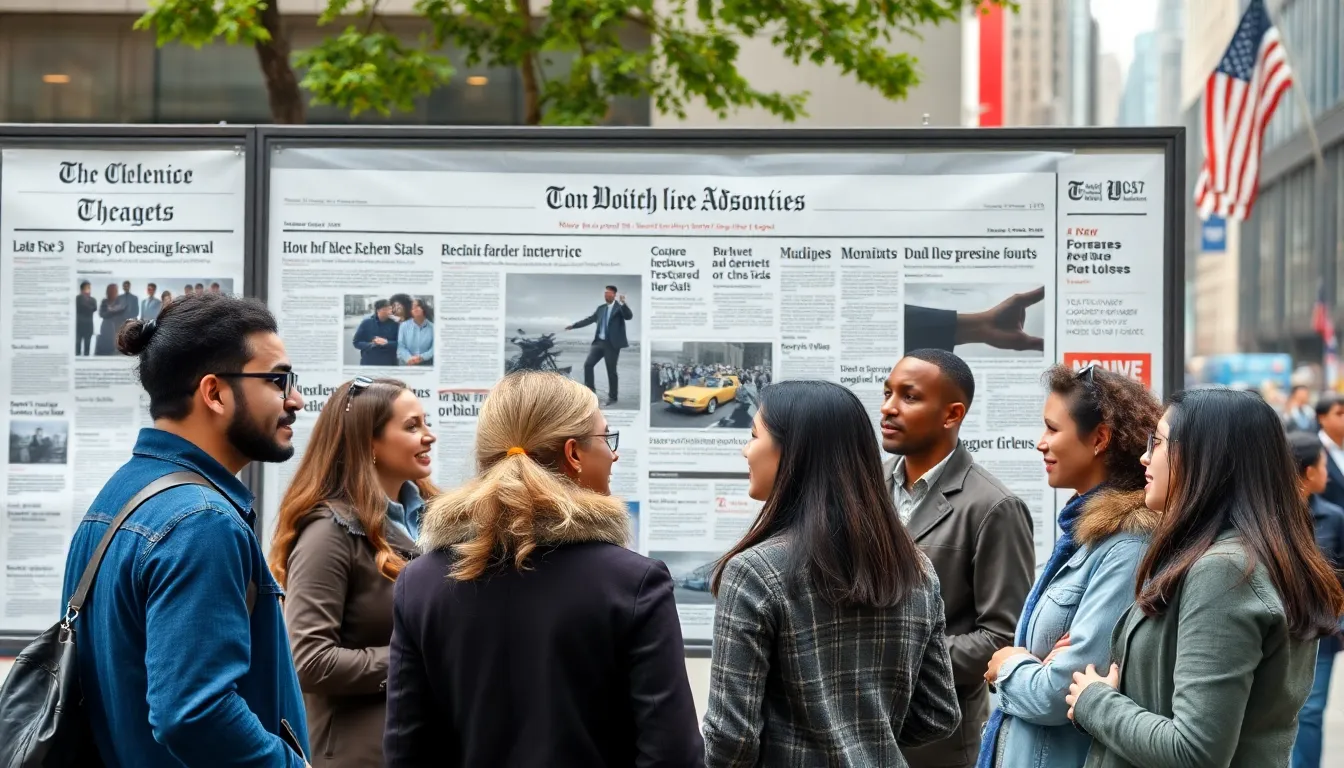Op-ed contributions are the unsung heroes of public discourse, where opinions clash and ideas ignite. They’re like the spicy salsa at a dinner party—sometimes too hot to handle but undeniably essential for a lively conversation. These pieces offer a platform for writers to share their unique perspectives, challenge the status quo, and maybe even stir the pot a little.
Table of Contents
ToggleUnderstanding Op Ed Contributions
Op-ed contributions play a vital role in enriching public discussions. They serve as a platform for diverse perspectives, enabling writers to share opinions on pressing issues.
Definition and Purpose
Op-eds, short for “opinion editorials,” are articles typically published in newspapers or online platforms. These pieces express an author’s viewpoint on current events or social issues. Writers use op-eds to persuade readers, stimulate discussion, or offer fresh insights. A well-crafted op-ed addresses a specific topic, presenting arguments that engage and inform the audience. It encourages individuals to reflect on their beliefs, challenge the status quo, and consider alternate perspectives.
Importance in Public Discourse
Op-eds significantly enhance public discourse by inviting readers to explore multiple viewpoints. These contributions foster robust conversations around important topics. They challenge existing narratives, often addressing underrepresented perspectives. Engaging with op-eds can lead to a more informed citizenry, as they present complex ideas in relatable language. Many readers rely on these pieces for clarity on contentious issues, making them a critical component of democratic dialogue. Public figures and policymakers often pay attention to op-eds, recognizing their influence on shaping opinions and guiding actions.
Types of Op Ed Contributions

Op-ed contributions vary in format and medium, allowing for diverse expressions of opinions on significant issues.
Traditional Op Eds
Traditional op-eds, found in print newspapers, serve as platforms for authors to voice compelling arguments. These pieces typically range from 600 to 800 words, emphasizing clarity and directness. Published in specific sections, authors often utilize traditional op-eds to engage with local and national audiences. By addressing timely topics, writers can influence public opinion and spark discussions in their communities. Prominent newspapers like The New York Times and The Washington Post regularly feature these contributions.
Digital Op Eds
Digital op-eds, prevalent in online publications, offer unique flexibility in presentation and audience engagement. These pieces often support various multimedia elements, such as videos or interactive graphics. Their length can vary significantly, accommodating both short and in-depth analyses. Platforms like Medium and HuffPost frequently publish digital op-eds. By utilizing hyperlinks, authors can direct readers to additional resources that enrich the discussion. Such op-eds cater to a growing audience that seeks immediate and accessible information.
Guest Columns
Guest columns present opportunities for non-staff writers to contribute their insights within a publication. Often longer than typical op-eds, these pieces allow authors to explore topics in depth. They enable voices from diverse backgrounds to share personal experiences and expertise that might otherwise be overlooked. Newspapers and magazines often feature guest columns in dedicated sections, providing exposure for various viewpoints. Readers benefit from this diversity, gaining a well-rounded perspective on current issues.
The Process of Writing Op Ed Contributions
Writing op-ed contributions requires a clear understanding of the topic, audience, and purpose. Authors explore their ideas deeply to articulate persuasive arguments effectively.
Research and Idea Formation
Research forms the foundation of successful op-eds. Gathering facts, statistics, and reputable sources strengthens arguments and enhances credibility. Writers often explore current events and social issues to identify compelling angles. People frequently keep an eye on local and national news for inspiration. They can also examine personal experiences to add unique perspectives. Brainstorming sessions help crystallize ideas and assess their relevance to the intended audience.
Structuring an Op Ed
An engaging op-ed follows a clear structure, generally including an introduction, body, and conclusion. The introduction captures readers’ attention with a strong hook. Body paragraphs present arguments supported by evidence, outlining key points concisely. Each paragraph transitions smoothly, maintaining a logical flow. A strong conclusion reiterates the main argument, prompting readers to consider their views. Writers also use subheadings and bullet points for clarity, especially in digital formats.
Tips for Engaging Writing
Engaging writing uses a conversational tone while remaining authoritative. Varying sentence lengths maintains reader interest. Authors often address counterarguments to strengthen their position. Utilizing anecdotes makes the piece relatable and memorable. Important phrases typically appear early to emphasize key ideas. Additionally, minimizing jargon ensures accessibility. Writers aim for clarity while maintaining a persuasive and thought-provoking manner throughout the text.
Impact of Op Ed Contributions
Op-ed contributions significantly shape public discourse and influence opinions.
Influencing Public Opinion
Op-eds serve as powerful tools for shaping public opinion. They provide platforms for individuals to present unique viewpoints and challenge prevailing narratives. Readers often find reinforcement of their beliefs or, conversely, exposure to opposing ideas in these pieces. Engaging content can spark discussions among readers, motivating them to contemplate different perspectives. Established writers and voices in communities can capture attention and inspire changes in mindset or behavior. Ultimately, op-eds cultivate a more informed and thoughtful populace, encouraging critical engagement with various issues.
Shaping Policy Discussions
Op-eds play a crucial role in shaping policy discussions. Policymakers and public figures often monitor these contributions to gauge public sentiment and emerging trends. Insights drawn from well-researched op-eds can directly influence legislative agendas and decision-making processes. By voicing concerns about specific issues, writers can prompt action or consideration from those in power. These contributions highlight gaps in current policies and provide evidence-based recommendations. Consequently, op-eds can bridge the gap between citizens and policymakers, ensuring that diverse perspectives enter the policy conversation.
Op-ed contributions play a vital role in shaping public discourse by providing a platform for diverse viewpoints. They not only enrich conversations but also encourage critical thinking among readers. By challenging existing narratives and presenting fresh insights, these pieces foster a more informed citizenry.
The various formats of op-eds cater to different audiences and preferences, making it easier for writers to share their perspectives. As they continue to influence public opinion and policy discussions, op-eds remain essential in bridging the gap between citizens and decision-makers. Engaging with these contributions can inspire readers to reflect on their beliefs and participate more actively in societal conversations.


